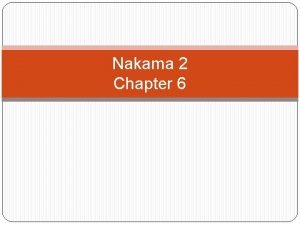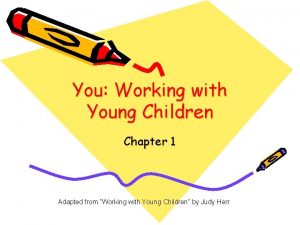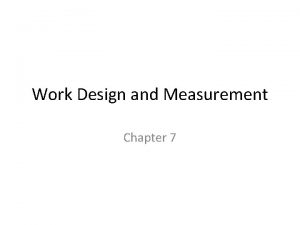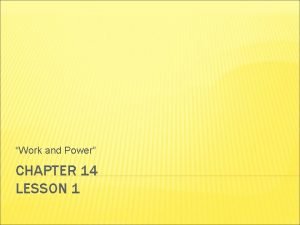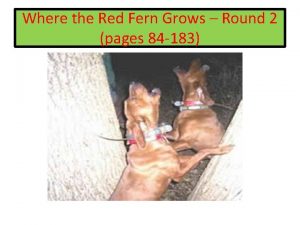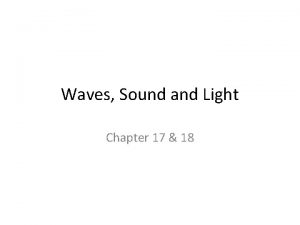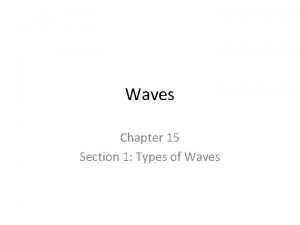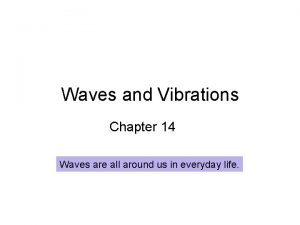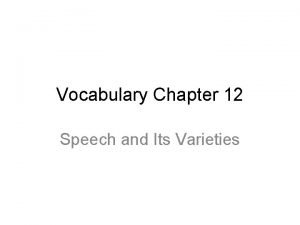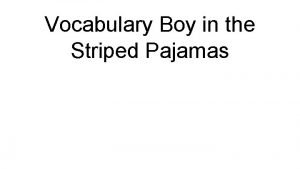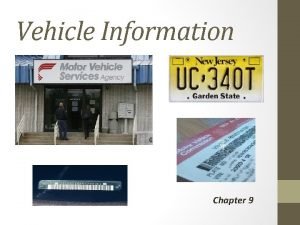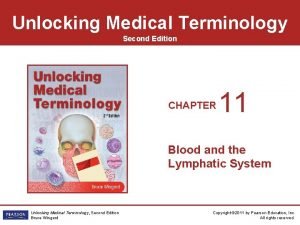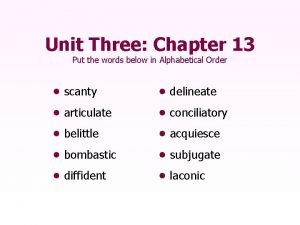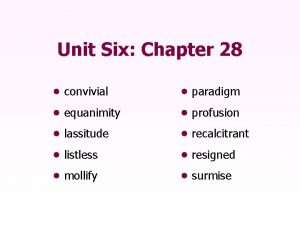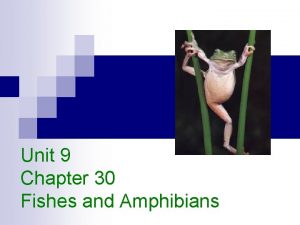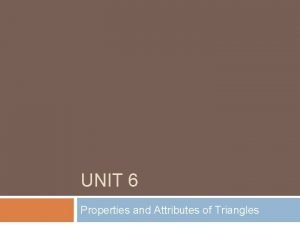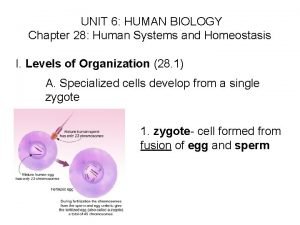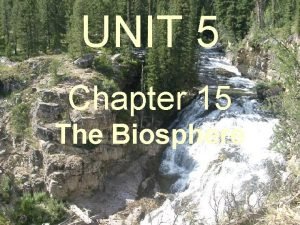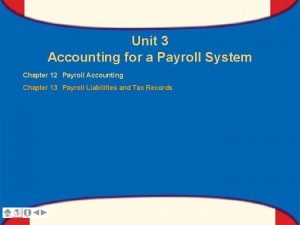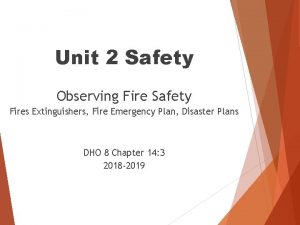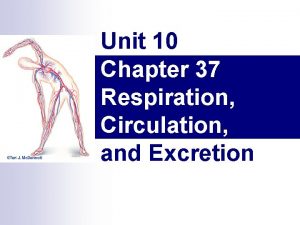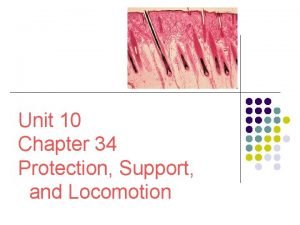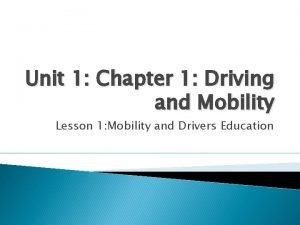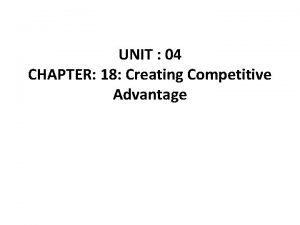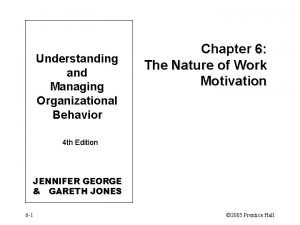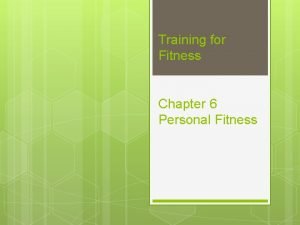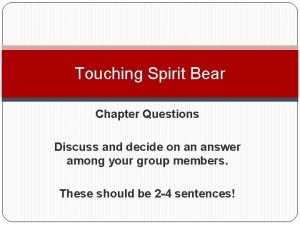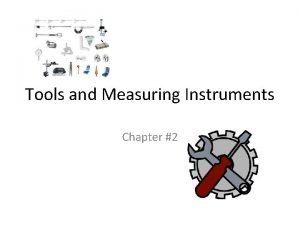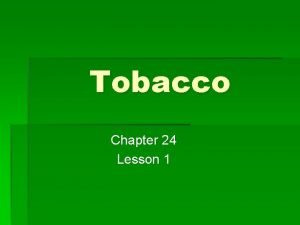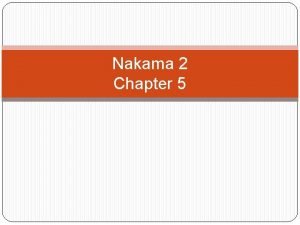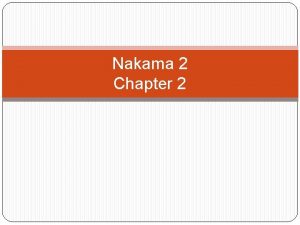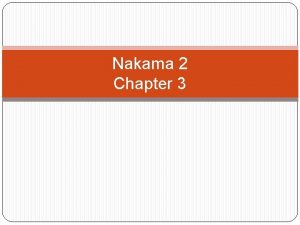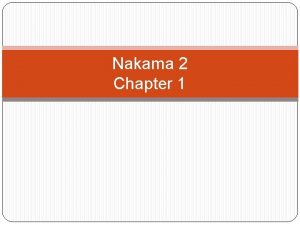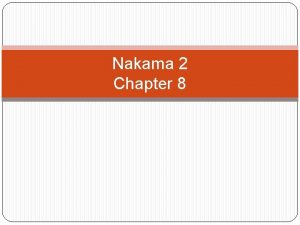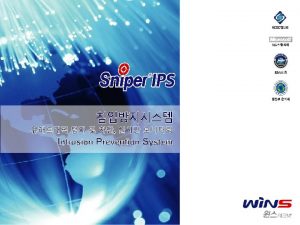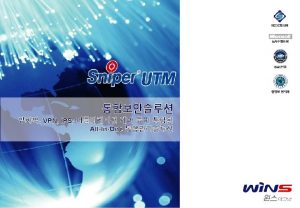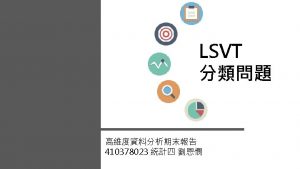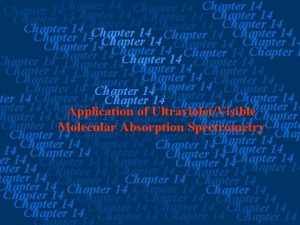Nakama 2 Chapter 1 P 39 C An













































































































- Slides: 109

Nakama 2 Chapter 1





P 39 C. 体のもんだいとしょうじょう An allergy To feel sick painful To feel nausea itchy pale To get tired serious To cough 6

P 39 C. 体のもんだいとしょうじょう To have a fever To have a stuffy nose To catch a cold To have an injury To have stiff shoulders To cut a finger To vomit 7

P 41 D. 病気の時にすること・しないこと Things you do and don’t do when you are sick To take medicine To lie down To apply medicine To open one’s mouth To go to a doctor To be hospitalized To take temperature To move one’s body 8
















どれぐらい あぶらを とっていますか? 健康長寿ネット: http: //www. tyojyu. or. jp/hp/page 000000900/hpg 000000876. htm 24



ぶんぽう1: Expressing capability using the potential forms of verb かんじがいくつ 読めますか。 100ぐらい 読めます。 27

ぶんぽう1: Expressing capability using the potential forms of verb • The younger generation now drops the ら out of ~ら れる in る-verb potential forms in colloquial speech. – 食べられる→食べれる、 寝られる→寝れる • Potential form and particles Direct object marker can be を or が, except できる, which takes only が. – 肉を 食べます。 – → 肉を/が 食べられます。 – テニスをします。 – → テニスが(Xを) できます。


ぶんぽう1: Expressing capability using the potential forms of verb The potential forms of all verbs conjugate as る-verb. 読む→読める→読めない→読めた→読めなかった→読めて

ぶんぽう1: Expressing capability using the potential forms of verb

ぶんぽう1: Expressing capability using the potential forms of verb

ぶんぽう1: Expressing capability using the potential forms of verb





ぶんぽう2: Expressing excessiveness using ~すぎる 38

ぶんぽう2: Expressing excessiveness using ~すぎる 39

ぶんぽう2: Expressing excessiveness using ~すぎる 40


P 52 Activity 2 Your own answer 42

P 52 Activity 2 43






ぶんぽう3: Giving suggestions using ~たらどう ですかand ~方がいいです A. ~たらどうですか(How about doing~, Why don’t you~) Add ら to the plain past affirmative verb. B. ~た方がいいです(It’s better to~, You should~) The plain past affirmative+ほうがいい ~ない方がいいです(It’s better not to~, You should not~) The plain present negative of a verb+ほうがいい 49


P 54 Activity 1 51

P 55 Activity 2 • Work with a partner. Think of a physical condition such as having a cold or not being able to sleep. . Get suggestions from your partner. Condition hints: ねつがある、ゆびをきった、かたがこっている、気分がわるい、 かぜをひいた、アレルギーがある、せきが出る、はがいたい 52






ぶんぽう4: Describing what efforts are being made to attain a specific goal using ~ように

ぶんぽう4: Describing what efforts are being made to attain a specific goal using ~ように Q. みなさんは、病気にならないように何かしてい ますか。



ぶんぽう5: Makin a negative request (~ないで下さ い); expressing unacceptable actions or situations (~ てはいけない); asking for and giving permission (~ てもいい) A. ~ないで下さい: negative request “Please don’t~. ” B. ~てはいけない: prohibition “It’s NOT okay to do~. ” C. ~てもいい: permission “It’s ok to do~. ”

ぶんぽう5/A. Making a negative request using ~ないで下さい


ぶんぽう5/A. Making a negative request using ~ないで下さい うるさい。 。。 No cell phone!

P 61 Activity 1 ( )

P 61 Activity 1

ぶんぽう5/B. expressing unacceptable actions or situations using ~てはいけない

ぶんぽう5/B. expressing unacceptable actions or situations using ~てはいけない






B. ~ちゃ/じゃだめ To speak English To play 75






P 62 Activity 2













Supplementary Vocabulary Expressions a doctor and nurse use ここはどうですか。 大きく口をあけて下さい。 上だけぬいで下さい。 etc. ) 後ろをむいて下さい。 あおむけになって下さい。 うつぶせになって下さい。 大きくいきをすって下さい。 How does it feel here? Please open your mouth wide. Please take off your top. ( shirt, blouse, Please turn around. Please lie on your back. Please lie face down. Please take a deep breath. 94











P 70, 71 読むれんしゅう Most Japanese clinics and hospitals have their own pharmacies. A prescription drug is usually put in a small packet with instructions. Now look at the pictures and try to guess which one is a pharmacy packet.




 Japanese quotation marks
Japanese quotation marks The red tent book summary
The red tent book summary The great gatsby chapter 8 notes
The great gatsby chapter 8 notes Chapter 10 chapter assessment chemical reactions answers
Chapter 10 chapter assessment chemical reactions answers Chapter 11 stoichiometry study guide answer key
Chapter 11 stoichiometry study guide answer key Chapter 9 study guide chemical reactions
Chapter 9 study guide chemical reactions Chapter 7 similarity
Chapter 7 similarity Chapter 6 career readiness review
Chapter 6 career readiness review Chapter 7 ionic and metallic bonding chapter answer key
Chapter 7 ionic and metallic bonding chapter answer key Chapter 9 surface water answer key
Chapter 9 surface water answer key Physics chapter 2 representing motion assessment answers
Physics chapter 2 representing motion assessment answers Chemistry: the central science chapter 14 answers
Chemistry: the central science chapter 14 answers Chapter 7 ionic and metallic bonding answer key
Chapter 7 ionic and metallic bonding answer key Section 1 population dynamics answer key
Section 1 population dynamics answer key Chapter 2 chapter assessment
Chapter 2 chapter assessment Facts about the philippian jailer
Facts about the philippian jailer Properties of ionic bonds
Properties of ionic bonds Chapter 7 chapter assessment ionic compounds and metals
Chapter 7 chapter assessment ionic compounds and metals Tetraphosphorus octoxide formula
Tetraphosphorus octoxide formula Zeta phi beta pledge club
Zeta phi beta pledge club Working with young children/answer key chapter 1
Working with young children/answer key chapter 1 Wuthering heights chapter wise summary
Wuthering heights chapter wise summary Wuthering heights chapter 8
Wuthering heights chapter 8 Chapter 10 qualitative research designs
Chapter 10 qualitative research designs Chapter 24 world war looms
Chapter 24 world war looms Chapter 16 building vocabulary world war looms
Chapter 16 building vocabulary world war looms World war 1 and the russian revolution chapter 27
World war 1 and the russian revolution chapter 27 Lesson 4 world war 1 ends
Lesson 4 world war 1 ends Chapter 17 section 3 luther leads the reformation
Chapter 17 section 3 luther leads the reformation Chapter 32 assessment world history
Chapter 32 assessment world history Chapter 30 section 2 world history
Chapter 30 section 2 world history Chapter 8 nationalist revolutions sweep the west
Chapter 8 nationalist revolutions sweep the west Chapter 15 section 2 world history
Chapter 15 section 2 world history Chapter 10 section 2 central america and the caribbean
Chapter 10 section 2 central america and the caribbean Ap human geography chapter 11 vocab
Ap human geography chapter 11 vocab Chapter 3 climates of the earth answers
Chapter 3 climates of the earth answers Work measurement techniques
Work measurement techniques Unit 14 lesson 1 drivers ed
Unit 14 lesson 1 drivers ed Chapter 7 wood joints
Chapter 7 wood joints Glue
Glue Wilson fights for peace
Wilson fights for peace Why study financial markets
Why study financial markets Why be happy when you could be normal themes
Why be happy when you could be normal themes Where the red fern grows chapter 12
Where the red fern grows chapter 12 Ap psychology chapter 14
Ap psychology chapter 14 Great gatsby chapter 7-9 quiz
Great gatsby chapter 7-9 quiz Is chalk natural or manmade
Is chalk natural or manmade Great expectations chapter 26
Great expectations chapter 26 Chapter 11 great expectations
Chapter 11 great expectations Great expectations
Great expectations Great expectations chapter 6
Great expectations chapter 6 Matthew chapter 7
Matthew chapter 7 Chapter 20 weather patterns and severe storms
Chapter 20 weather patterns and severe storms Chapter 17 mechanical waves and sound wordwise answer key
Chapter 17 mechanical waves and sound wordwise answer key Chapter 15 section 1 types of waves answers
Chapter 15 section 1 types of waves answers How to fix forks in waves
How to fix forks in waves Eric walters wave
Eric walters wave Chapter 24 section 2 watergate answers
Chapter 24 section 2 watergate answers Walk two moons chapter 31
Walk two moons chapter 31 Chapter 18 revenue recognition
Chapter 18 revenue recognition Chapter 12 speech vocabulary
Chapter 12 speech vocabulary The boy in the striped pajamas vocabulary
The boy in the striped pajamas vocabulary The visual and artistic aspects of presenting a product
The visual and artistic aspects of presenting a product Chapter 14 vibrations and waves
Chapter 14 vibrations and waves Chapter 9 vehicle information
Chapter 9 vehicle information Chapter 6 varieties of drama
Chapter 6 varieties of drama Chapter 11 section 4 using water wisely answer key
Chapter 11 section 4 using water wisely answer key We think we are using water wisely because
We think we are using water wisely because Toward civil war lesson 3 secession and war
Toward civil war lesson 3 secession and war Chapter 11 medical terminology
Chapter 11 medical terminology Put the words below in alphabetical order
Put the words below in alphabetical order Paradigm. meaning
Paradigm. meaning Chapter 9 frontiers of biotechnology
Chapter 9 frontiers of biotechnology Reverent
Reverent What is amphibia
What is amphibia Segment fg is the angle bisector of
Segment fg is the angle bisector of  Chapter 28 human systems and homeostasis
Chapter 28 human systems and homeostasis Chapter 15 the biosphere
Chapter 15 the biosphere Part four analyzing sales and cash receipts
Part four analyzing sales and cash receipts Motion forces and energy
Motion forces and energy Glencoe accounting chapter 12
Glencoe accounting chapter 12 Chapter 14:3 observing fire safety
Chapter 14:3 observing fire safety 5 determinants of supply
5 determinants of supply Chapter 4 the simple ledger answers
Chapter 4 the simple ledger answers Chapter 3 lesson 3 expressing emotions in healthful ways
Chapter 3 lesson 3 expressing emotions in healthful ways Measuring and recording apical pulse
Measuring and recording apical pulse Chapter 17 thermochemistry practice problems
Chapter 17 thermochemistry practice problems Chapter 37 respiration circulation and excretion
Chapter 37 respiration circulation and excretion Protection support and locomotion answer key
Protection support and locomotion answer key How is the hts regulated
How is the hts regulated Chapter 18 creating competitive advantage
Chapter 18 creating competitive advantage Chapter 18 creating competitive advantage
Chapter 18 creating competitive advantage Organizational behavior chapter 6
Organizational behavior chapter 6 Malaysian studies chapter 1
Malaysian studies chapter 1 Dollar diplomacy definition us history
Dollar diplomacy definition us history Chapter 5 the minor parties
Chapter 5 the minor parties Types of early childhood programs chapter 2
Types of early childhood programs chapter 2 Turmoil and change in mexico
Turmoil and change in mexico Tuesdays with morrie discussion questions by chapter
Tuesdays with morrie discussion questions by chapter Chapter 7 tuck everlasting
Chapter 7 tuck everlasting Tsotsi literature essay on decency
Tsotsi literature essay on decency Tsotsi chapter 1 questions and answers
Tsotsi chapter 1 questions and answers What is principles of individuality
What is principles of individuality Why does garvey give cole the at.oow
Why does garvey give cole the at.oow Touching spirit bear questions
Touching spirit bear questions Edwin states pride has no
Edwin states pride has no What realization does cole have regarding his father
What realization does cole have regarding his father Chapter 14 section 2 totalitarianism
Chapter 14 section 2 totalitarianism Tools and measuring instruments chapter 2
Tools and measuring instruments chapter 2 Chapter 24 lesson 1
Chapter 24 lesson 1
